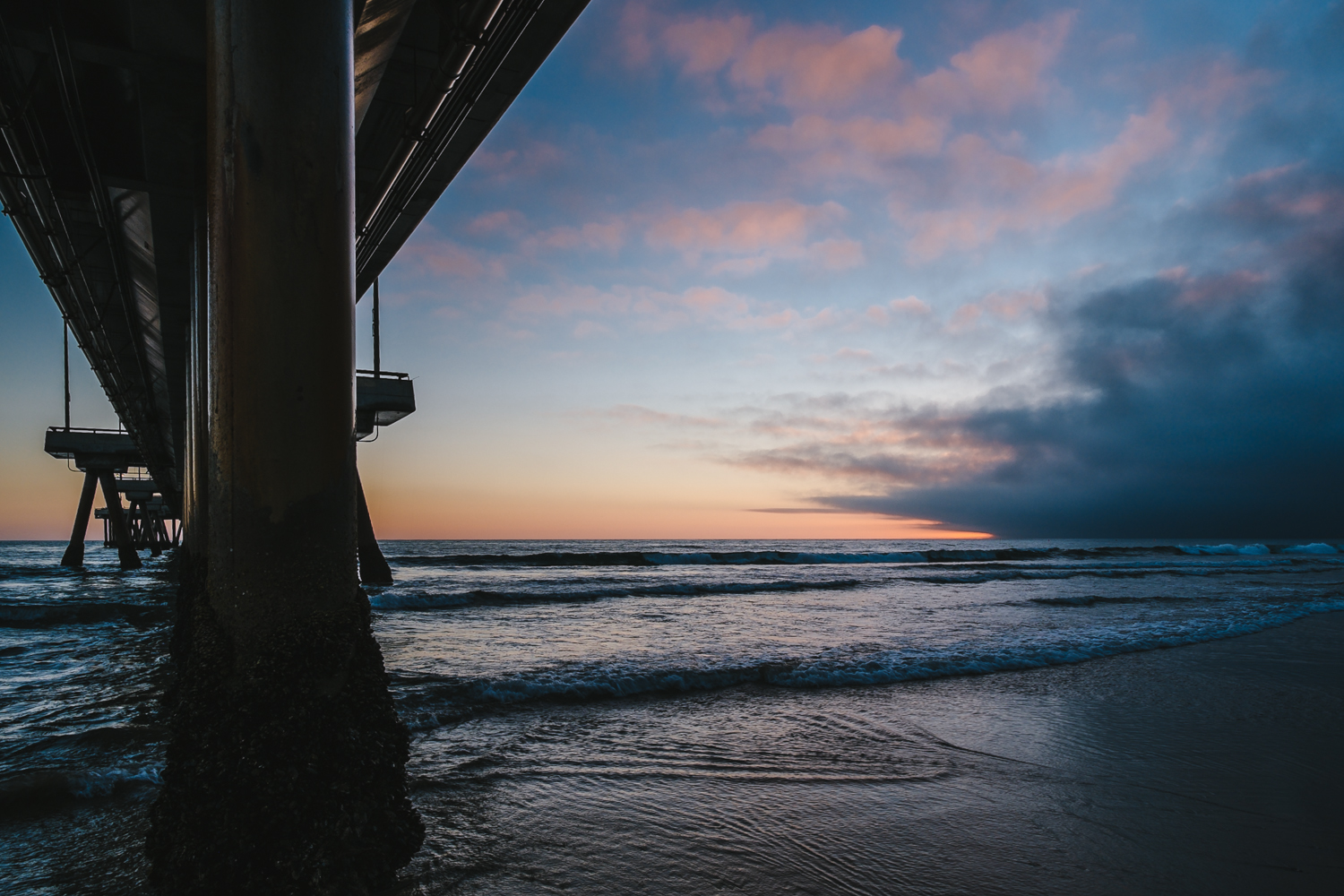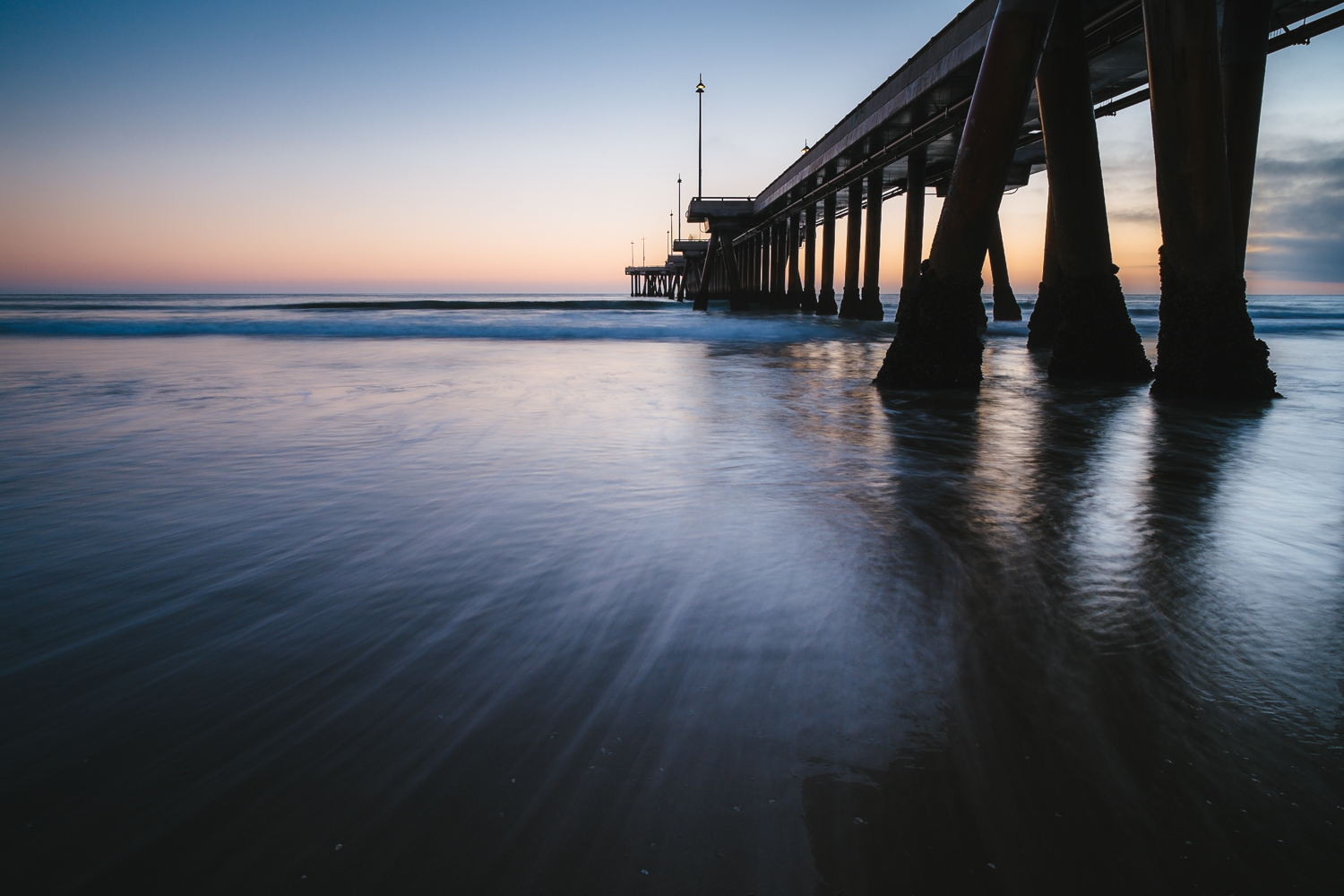It's been six months since I purchased the X-Pro1. During that time, it has been with me to San Diego, the Sequoia and Kings Canyon National Parks, San Francisco, the Oregon Coast, and numerous beaches throughout Southern California. It has handled the windy, sandy, and wet conditions I photograph in and even survived (thus far) a three foot drop that landed it in a puddle of water at Cape Perpetua. (Unfortunately, my XF 14mm lens didn't fare so well.) Having put the X-Pro1 through its paces, I figured this was a good time to share my thoughts on using it for landscape photography.
Thor's Well - Cape Perpetua, Oregon Coast. One of my last shots with the X-Pro1 and XF 14mm.
What's Great for Landscape Photography
There are plenty of things that are great about the X-Pro1; its X-Trans sensor that produces excellent images, its growing lineup of lenses that mostly seem to be exceptionally sharp, and its magnesium alloy body that makes it more rugged than one might expect (this one I can personally vouch for). But beyond these, there are two seemingly minor things that I really like about the X-Pro1 for landscape photography. Its manual controls and its large LCD display.
As I mentioned previously when writing about the X100, one of my favorite things about the X Series cameras is the manual controls for aperture, shutter speed, and exposure compensation. Having the ability to set these without looking into the viewfinder or checking the LCD really improves the usability of the camera. Instead of having to manipulate a series of buttons and dials on the back of my old DSLR, the X-Pro1 lets me easily adjust my aperture and shutter speed independently and to see my settings before turning it on. I know this might sound like a trivial thing, but when I have the X-Pro1 set low on a tripod, being able to easily check my settings makes a world of difference.
Another thing that I really like about the X-Pro1 when shooting landscapes is the 3-inch LCD display. I'll admit, this didn't figure much into my decision to purchase the X-Pro1 since I mainly used the hybrid viewfinder with my X100. But now that I've used the bright and crisp LCD extensively for composing images, I prefer it to the viewfinder most of the time when I'm shooting on a tripod. It's true that there are some situations where the viewfinder is a better way to go, say in bright sunlight, but this is rarely the case for me since I'm usually shooting at dusk and dawn.
Newport Beach Sunset. Shot from a low perspective on a tripod using the LCD display.
What's Not So Great
So what about the bad? While the X-Pro1 certainly isn't perfect, there aren't many things that I would say is really bad. For instance, with all of Fuji's firmware updates, the focusing is now much improved and isn't a problem for me. I'm not too crazy that I can't use the optical viewfinder for exact framing of my images, but I also knew going in that this was never what the OVF was intended for. Besides, I can easily switch over to the electronic viewfinder when I need exact framing.
There is one thing about the X-Pro1 however, that I really, really don't like. The location of the tripod mount. For some reason, Fuji decided that it's unnecessary to access the battery or memory card when a tripod plate is mounted onto the camera. As someone that uses a tripod often, having to remove the tripod plate every time I want to charge the battery or download my images is extremely annoying. For a company that did so many things right in the usability department with the X Series cameras, an oversight like this is quite surprising.
Final Thoughts
The short version - I really like using the X-Pro1 for landscape photography. I still prefer the X100 as a camera to always have with me, but the X-Pro1 along with the XF 14mm make a wonderful pair for my style of photography.
The slightly longer version - I am as happy with the X-Pro1 for shooting landscapes as I ever was with my old Canon 40D. The X-Pro1 and XF 14mm lens is my favorite combination for the subjects I like to capture. The manual controls and LCD work great for me when I'm working on a tripod, especially when I'm shooting long exposures.
On the flip side, even though the X-Pro1 and XF 14mm combined weight less than the Canon 40D, they are still by no means light. Since I usually take either the XF 18-55mm or XF 35mm along, I end up with a kit that is still heavier than something I want to carry all day. I've considered getting an X-E1 either as a backup or replacement to the X-Pro1, but I would really hate to lose the 3-inch LCD. I know that I'm splitting hairs here since what one considers heavy is all relative, but it might be something to consider for anyone that shoots landscapes and wants to move to the X-Pro1 as a replacement for a DSLR.
With that, I'll leave you with a few more images made with the X-Pro1 over the past six months.
Another image of Thor's Well, X-Pro1 and XF 14mm.
Newport Beach Pier, X-Pro1 and XF 35mm.
Manhattan Beach Pier, X-Pro1 and XF 35mm.
Bay Bridge, X-Pro1 and XF 14mm.










